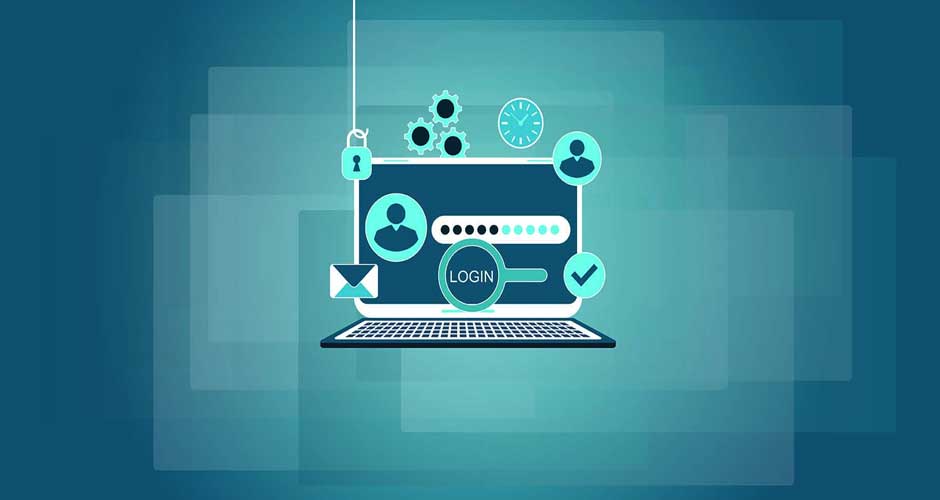Cybersecurity has become a critical concern as our personal and professional lives become increasingly intertwined with the Internet. Phishing attacks are the most prevalent and damaging cyber threats.
These attacks involve tricking individuals into divulging sensitive information and can lead to significant financial losses, data breaches, and reputational damage. Understanding phishing and implementing strategies to outsmart these malicious attempts is essential. Consult with the IT Support Los Angeles team to protect your business from phishing attacks.
In this blog, we will explore important insider tips to fortify your defenses against phishing attacks.
What is Phishing?
Phishing attacks are cybercrimes in which attackers disguise themselves as legitimate entities to deceive individuals into providing sensitive information, such as login credentials, credit card numbers, or personal identification details. These attacks typically occur through email, social media, or other online communication channels. The attackers craft convincing messages that appear to come from trusted sources, making it difficult for unsuspecting victims to identify the threat.
8 Tips to Outsmart Phishing Attacks
1. Verify Before You Click
One of the most important tips for avoiding phishing attacks is verifying before clicking links or attachments. Phishing emails often contain harmful links that can take you to fake websites that steal your personal information.
Before clicking on any link or downloading any attachment, verify the sender’s email address and look for suspicious signs such as misspellings or unfamiliar domains. By being cautious and confirming the legitimacy of all requests, you can help protect yourself from becoming a victim of phishing attacks.
2. Scrutinize the Sender
One of the key strategies to protect yourself from phishing attacks is to check the sender of any suspicious emails or messages carefully. Before clicking on any links or giving out personal information, examine the sender’s email address and make sure it’s legitimate.
Phishing attempts often involve pretending to be from official company addresses or using slightly different domain names to deceive people. Paying close attention to the sender’s information and being wary of unexpected requests for sensitive data can significantly lower the risk of phishing scams.
3. Resist Urgency
One crucial tip to outsmart phishing attacks is to resist urgency when receiving suspicious emails or messages. Phishers often try to create a sense of urgency or panic to prompt you into taking immediate action, such as clicking on a malicious link or providing personal information. By staying calm and carefully evaluating the legitimacy of the communication, you can avoid falling victim to these tactics.
Remember, legitimate organizations typically do not pressure you to act urgently or threaten negative consequences for inaction. Take your time to verify the sender’s identity and the content of the message before taking any steps.
4. Direct Verification
Direct verification is a crucial step in preventing phishing attacks. By directly verifying the authenticity of any suspicious communication or request, individuals can protect themselves from falling victim to phishing schemes. This involves contacting the supposed sender through a known, trusted method of communication to confirm the legitimacy of the request before taking any action.
Direct verification adds an extra layer of security, helping users distinguish between genuine messages and fraudulent attempts, thereby safeguarding personal information and sensitive data from potential cyber threats.
5. Educate and Train Employees
According to Statista, In 2023, more than 298 thousand individuals in the United States reported experiencing phishing attacks. This represented a 0.5 percent decrease compared to the previous year when phishing attacks nationwide exceeded 300 thousand.
Educating and training employees is a crucial step in outsmarting phishing attacks. Employees are often the first line of defense against these cyber threats, so it’s essential to ensure that they have enough knowledge and skills to identify and respond to phishing attempts effectively. Conduct regular training sessions to educate staff on recognizing phishing emails, websites, and social engineering tactics.
6. Promote Strong Password Practices
To combat phishing attacks, it is crucial to promote strong password practices. This includes ensuring employees create unique, complex passwords and regularly update them. Encouraging multi-factor authentication adds an extra layer of security, making it more difficult for cybercriminals to gain unauthorized access to sensitive information.
By promoting a culture of vigilance and emphasizing the importance of strong password management, organizations can strengthen their defenses against phishing attacks and effectively safeguard their valuable data.
7. Regularly Back Up Data
Remember to back up your data regularly. This is an important step in protecting against phishing attacks. By keeping your important files and information backed up, you can minimize the impact of a phishing attack that could cause data loss or encryption through ransomware. If you fall victim to a phishing attack, securing backups will allow you to restore your data without paying a ransom or facing permanent loss.
A strong backup plan is crucial, including storing copies of your data in off-site locations or using cloud services. With the Managed IT Services Los Angeles team, businesses protect your information and ensure that your business can continue to operate in the event of cyber threats.
8. Encourage Vigilance and Reporting
Encouraging vigilance and promoting reporting mechanisms are crucial strategies for outsmarting phishing attacks. Organizations can effectively reduce the risks associated with phishing attempts by fostering a culture of awareness and empowering employees to report suspicious emails or messages promptly.
Regular training sessions on identifying phishing red flags and clear reporting procedures can significantly enhance an organization’s cybersecurity posture. Additionally, implementing robust email filtering systems and multi-factor authentication measures can provide additional layers of defense against phishing attacks.
Conclusion
Phishing attacks are a significant and evolving threat, causing severe damage to individuals and organizations. To protect against these attacks, it is crucial to understand their various forms and implement comprehensive strategies. Cybersecurity is a collective responsibility, requiring ongoing effort and awareness from everyone within an organization. Staying informed and vigilant will help build robust defenses, safeguard sensitive information, and ensure swift recovery with minimal disruption in the event of an attack.
